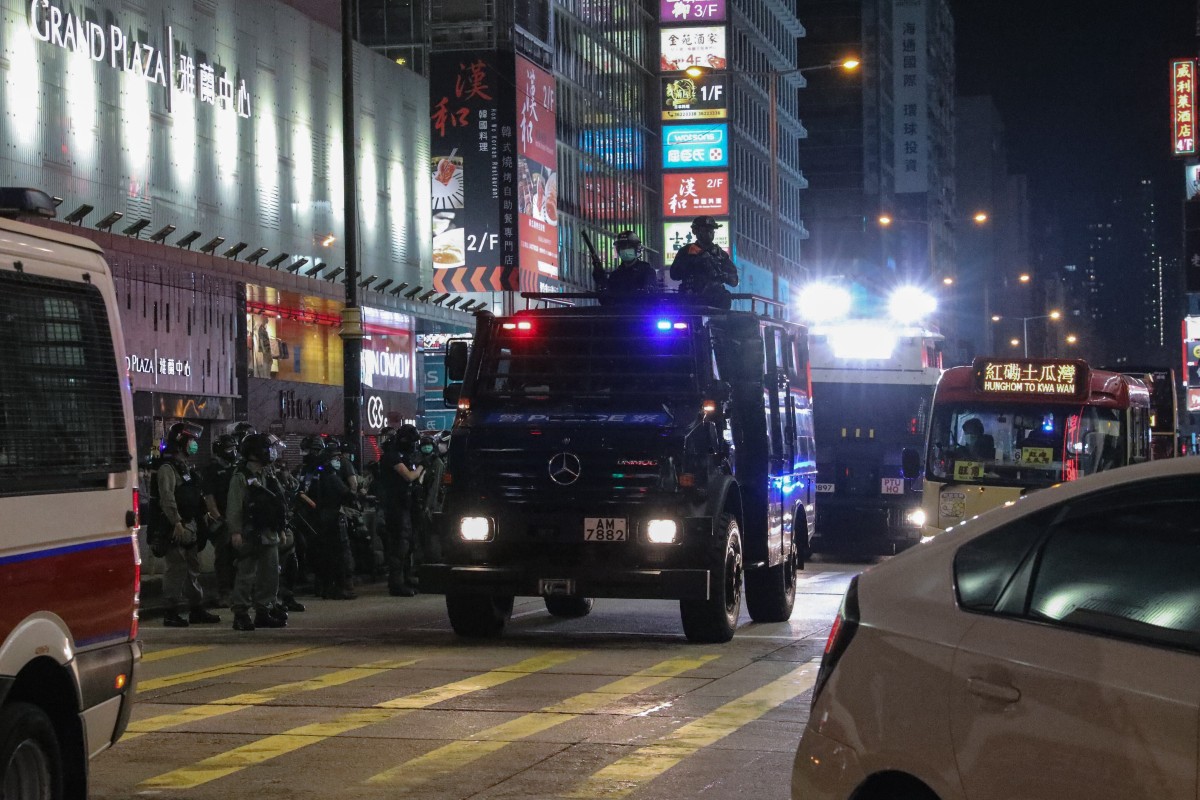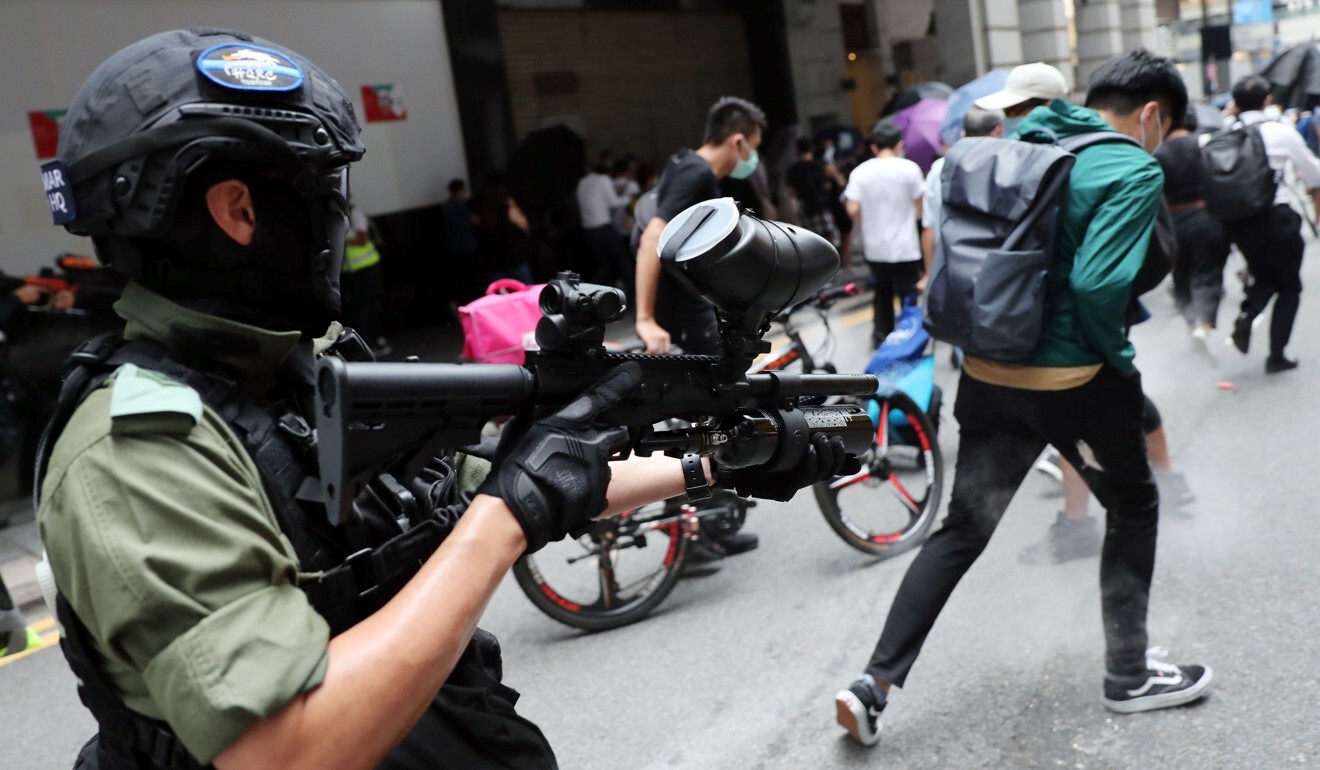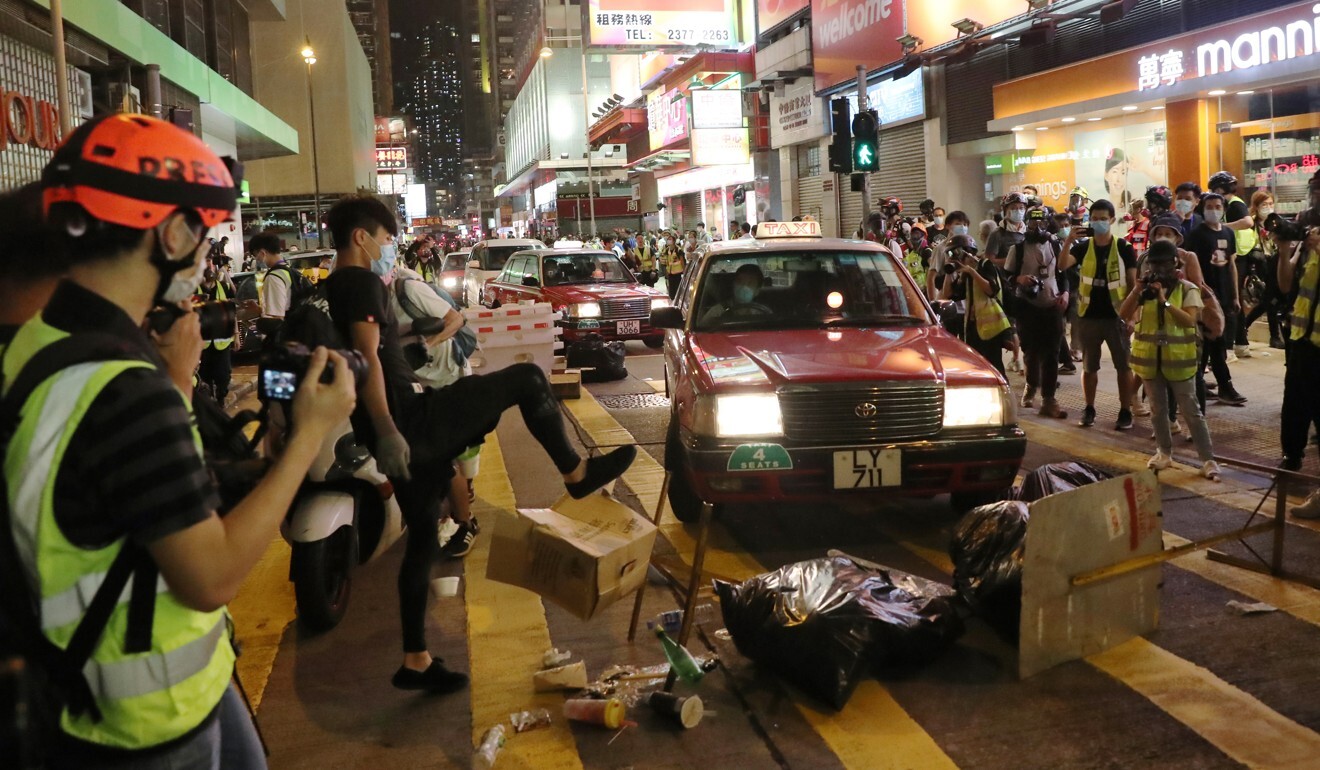
More than 360 people were arrested on a day of running protests across Hong Kong as thousands took to the streets to oppose two contentious new laws concerning Chinese sovereignty, and riot police worked late into the night battling radicals who blocked roads and set fires.
Young pupils in school uniform were among those taken away in pre-emptive strikes on banned gatherings as police, out in force to head off wider chaos, arrested anti-government protesters for offences including unlawful assembly and possession of weapons.
Diehard protesters continued to play cat and mouse with police late into the night in the streets of Mong Kok, and radicals disrupted traffic with road blocks, set debris alight, and at one point threw gas canisters into a fire, causing a series of explosions.
The show of defiance came as lawmakers began a four-day debate over the national anthem law at the Legislative Council. Voting on the bill, which would criminalise insults to March of the Volunteers, the national anthem of the People's Republic of China, including Hong Kong and Macau, is expected to take place on June 4.
But most of the anger was driven by Beijing’s plan to press ahead with a tailor-made national security law for Hong Kong. The National People’s Congress is to vote on Thursday on a resolution prohibiting acts of secession, subversion, terrorism or conspiracy with foreign influences in the city, before sending it to the NPC Standing Committee to craft the finer details.
The proposed resolution was amended on Tuesday to expand its scope to prohibit “activities” that would “seriously endanger national security”, sources told the South China Morning Post.
Beijing’s move has raised widespread concerns over the implications for existing local freedoms, with worried critics warning it would be the end of Hong Kong’s high degree of autonomy under the “one country, two systems” principle.
The government and its allies have launched a PR offensive to spread the word that only a minority of radicals threatening national security would be targeted by the law, and the city’s freedoms and fundamentals would remain unaffected.
Tycoon Li Ka-shing, Hong Kong’s second-richest man, added his voice to the campaign on Wednesday, expressing strong support for the new security law as a necessary measure to help the city maintain its long-term stability.
Activists earlier this week had called via social media for mass action to derail Wednesday’s proceedings at Legco. They had called for protesters to paralyse major roads and MTR stations across the city before 7am so that police numbers would be diluted in Admiralty, where the legislative complex is located.
But the force took a pre-emptive approach to gatherings, maintaining a heavy police presence across the city since Tuesday night. Police sealed off access to the complex, only allowing in authorised vehicles.
Ahead of the protests, at least 16 people between the ages of 14 and 40 were arrested, including three carrying petrol bombs in Sham Shui Po.
Wednesday morning was relatively calm, with minor disruptions during rush hour.

Nails and pieces of fence were found on main roads in Hung Hom and Tseung Kwan O, and officers removed pieces of fencing thrown onto the tracks at Kwai Hing MTR station before trains started running.
Train doors were also blocked at stations in Nam Cheong, North Point, Tin Hau and the University of Hong Kong, slowing service. Two people accused of taking part in a slow-drive protest at the Hong Kong Island exit of the Cross-Harbour Tunnel were arrested for dangerous driving.
On their first day back in classrooms after schools were suspended for four months owing to the Covid-19 pandemic, some students skipped classes or staged sit-ins.
In Tsuen Wan, a few students took part in a “Walk with You” demonstration to march from the rail station to their schools.
Jenny Chan, a Form Four student at Po Leung Kuk Lee Shing Pik College, said it was a show of defiance against the government.
“We wish to let the government know that many of us have never supported the national security law, unlike what they believed, that all people of Hong Kong would support the proposed legislation,” the 16-year-old said.
Crowds began to gather on the streets in multiple districts around noon. Most demonstrators wore surgical masks instead of the usual protest gear such as gas masks, helmets and goggles.
In a statement, police said violent illegal activity occurred in various districts throughout the day, becoming more frequent in the afternoon.
“The situation is worrying as offensive weapons including petrol bombs and nails were found in public places when police were conducting patrols,” the force said.
Scores of people were detained in the major districts of Central, Causeway Bay, Admiralty and Mong Kok for taking part in unauthorised assemblies, with anti-coronavirus rules against large gatherings still in force.

One protester, Kitty Fung, 17, lamented the difficulty of continuing to fight for democracy in Hong Kong given the police presence and mass arrests.
“It seems it is no longer possible for us to do anything, unlike before,” she said. “I feel like we have given a lot but have achieved nothing.”
In Central, non-lethal pepper-ball rounds were fired at the junction of Queen’s Road Central and D’Aguilar Street, where some protesters had earlier disrupted traffic.
Hundreds of people had gathered at the busy intersection around lunch time, while at least 100 officers arrived in police vans.
Tensions on the ground started easing from 5pm, but demonstrators continued to gather on the flyovers above Pedder Street, chanting slogans.
In Central, a 22-year-old woman who did not want to be named said she was fighting for the city’s freedom. “We want to protect our freedom of speech [or] it will no longer be Hong Kong, but will become just another Chinese city.”
The atmosphere was also tense around 1.30pm in Causeway Bay, where a group of around 80 people were detained by police at Hysan Place. The officers pointed pepper spray at the crowds who were urging them to release the detainees.
A 57-year-old woman said she was heartbroken to see so many young people being taken away by police in Causeway Bay.
“What have they done? They did not even have protest gear with them,” she said.
In Mong Kok, crowds began to gather in the afternoon for scattered road occupations and confrontations with police. A water cannon and armoured truck were brought in as the skirmishes intensified at night.
Before midnight, protesters and police had left the area, and traffic on Nathan Road had resumed.
Reporting by Emily Tsang, Kanis Leung, Victor Ting, Lilian Cheng, Phila Siu, Zoe Low, Laura Westbrook, Chan Ho-him and Danny Mok







